Proactively respond and minimize damage
Through the review of the provincial health sector, 3 hospitals, 7 medical stations in the eastern area and 3 medical stations in the western area of the province were flooded due to the impact of heavy rain. At Quy Nhon Traditional Medicine and Rehabilitation Hospital (Quy Nhon Bac ward), the work to overcome the consequences of the flood was proactively deployed by the Hospital Board of Directors. Before the floodwaters rose, the Hospital Board of Directors activated the emergency disaster prevention and control plan, moving treatment equipment, medical supplies, and records to higher floors to minimize damage.
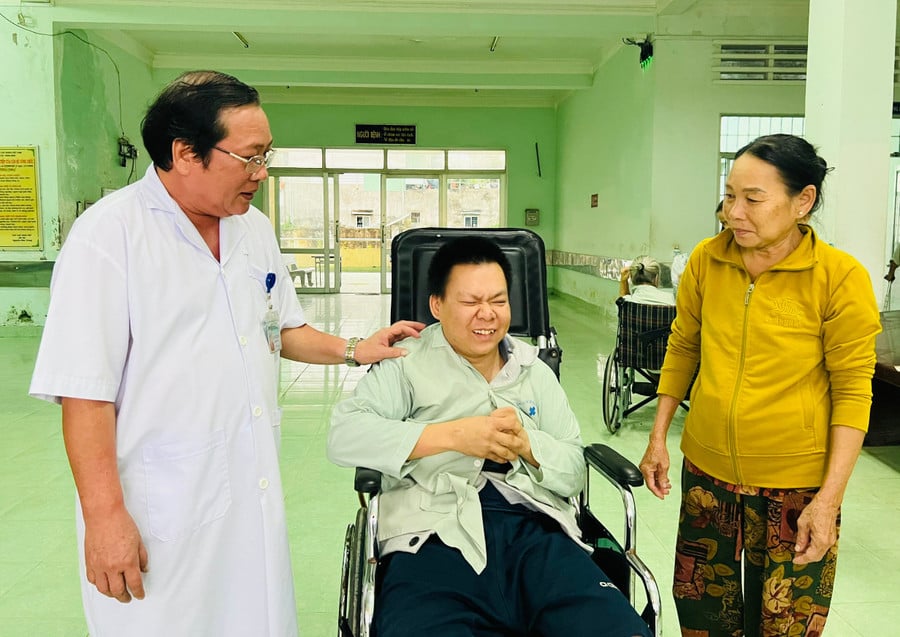
Doctor Vo Ngoc Phai, Director of Quy Nhon Traditional Medicine and Rehabilitation Hospital (Quy Nhon Bac ward) visits and encourages patients. Photo: Minh Nhat
According to Dr. Vo Ngoc Phai, Director of Quy Nhon Traditional Medicine and Rehabilitation Hospital, floodwaters flooded into many departments and rooms on the first floor. At that time, the hospital had 249 patients being treated and 150 relatives. The hospital's Board of Directors requested to ensure absolute safety for patients and medical staff who were stationed at the unit 24/24 hours in all situations of isolation due to deep flooding...
Immediately after the flood receded, the hospital coordinated with the provincial police to overcome the consequences of the flood. Ms. Pham Thi Suong ( Vinh Long village, Hoa Hoi commune) whose son was paralyzed on one side due to a traffic accident and has been treated at the hospital for the past 2 months, shared: "Seeing the doctors and nurses taking care of patients while "racing against the flood" to minimize damage, I felt so sorry. After the flood, I and the patient's family helped the doctors and nurses clean the hospital."
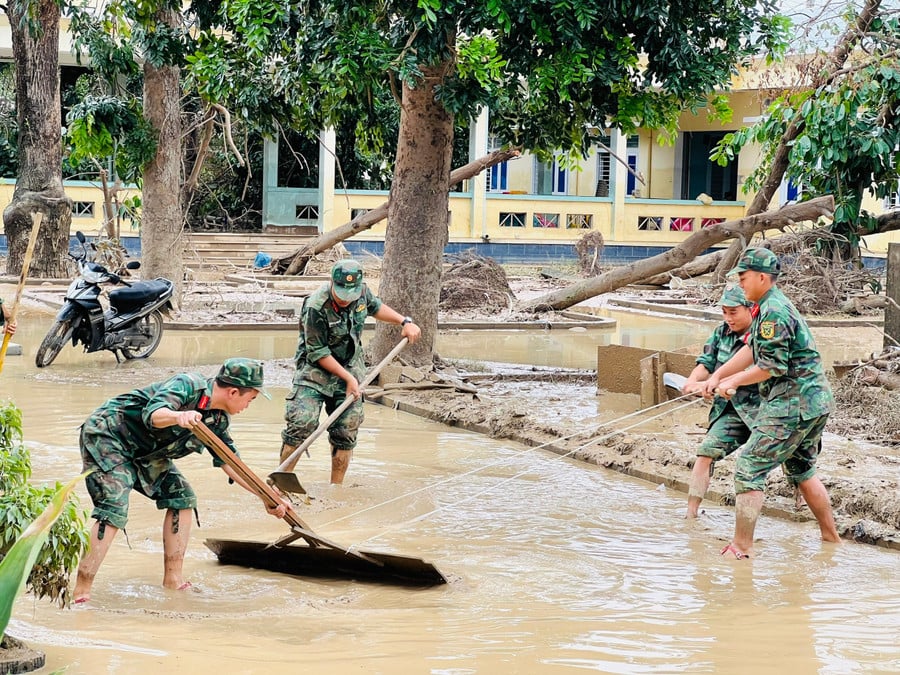
Military forces support cleaning up the grounds of Quy Nhon Mental Hospital (Quy Nhon Bac ward) affected by floods. Photo: Minh Nhat
According to Dr. Ngo Ly Nam, Deputy Director of Quy Nhon Mental Hospital, during the flood, the hospital had 139 patients being treated, many of whom were seriously ill. When the floodwaters rose, medical records and equipment were moved to higher floors for protection. The hospital was flooded more than 2 meters, patients on the first floor were moved to the second floor, rooms were consolidated to have enough space for patients to rest, ensuring safety and care for patients.
“As of the morning of November 23, the hospital grounds were still stained with mud and stagnant water, making movement difficult. Currently, the hospital is receiving support from police, militia, and soldiers in the province to help with the repair work…”, said Dr. Nam.
For the medical stations in the western communes of the province that were deeply flooded, with a proactive and responsible spirit, the team of medical staff promptly deployed a series of measures. Doctor Nay H'Mira, Head of Ia Sao Commune Medical Station, Facility 1, said: The station was flooded more than 1 meter deep, but before that, the unit proactively and quickly moved records, computers, medicines, medical supplies and especially the vaccine cabinet to the local school at a high point, not flooded, so all assets were safely preserved.
When the water began to recede, the Station mobilized all staff to urgently clean up, clear mud, disinfect the campus and restore medical examination and treatment activities on November 21. Along with that, the Station coordinated with Ayun Pa Medical Center to disinfect well water in residential areas and disinfect flooded households to prevent disease outbreaks.
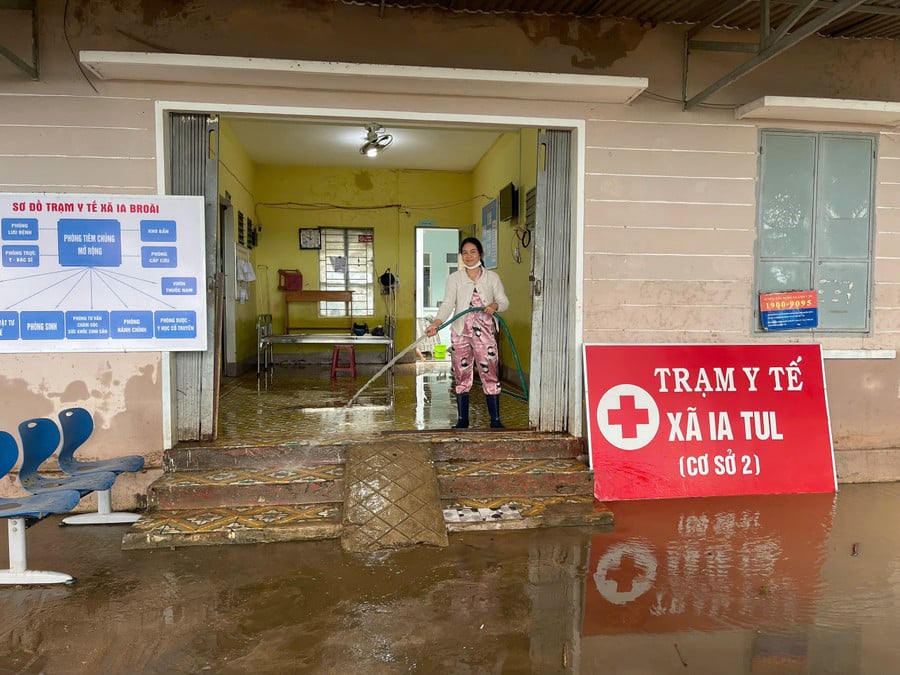
Officers and staff of Ia Tul Commune Health Station, Facility 2, clean up mud after the flood. Photo: Vu Chi
Medical examination and treatment work was maintained by the stations without interruption. Notably, Ia Tul Commune Health Station, Facility 4, promptly provided first aid to Ms. Kpa H'Nien (born 2003, Dlai Bau village, Ia Tul commune) who was electrocuted while clearing her belongings to escape the flood. "Thanks to the help of the doctors at the Station, I gradually regained consciousness and am now in stable health. In the situation where the Station is busy dealing with the flood, my family and I appreciate and are even more grateful," Ms. H'Nien emotionally said.
Strengthen environmental sanitation and disease prevention after floods
After the floodwaters gradually receded, the health sector continued to mobilize 181 health officials to support localities affected by floods.
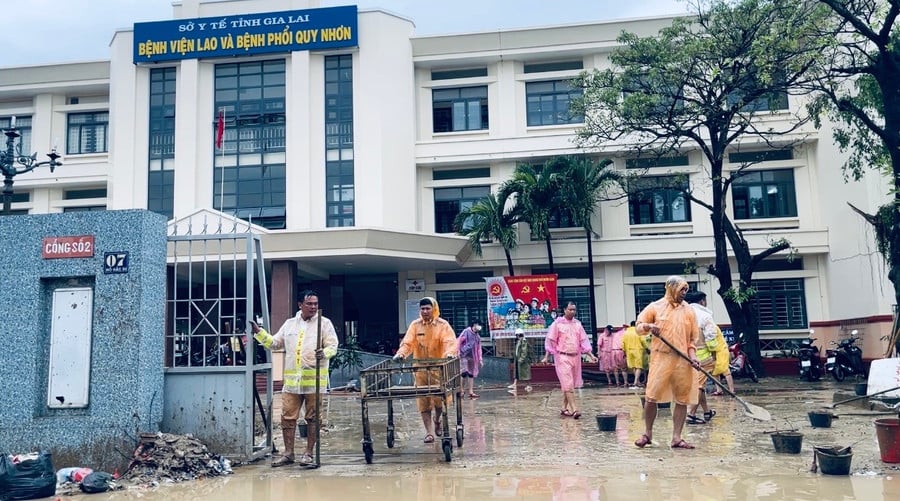
Medical staff spray disinfectant at a school in Quy Nhon Bac ward after flooding. Photo: MN
On the morning of November 22, Director of the Department of Health Le Quang Hung chaired a meeting and assigned specific tasks to mobilized officials, focusing on environmental sanitation, water source disinfection, disease prevention and control, health education and communication... in localities as assigned by the leaders of Quy Nhon Medical Center and Tuy Phuoc Medical Center, to be deployed from November 22 to 26.
“In addition to the proactiveness of the staff, civil servants and workers on-site at hospitals and medical stations, it is extremely necessary to increase the force from medical units in the western region of the province to support the eastern region of the province. This timely support helps stabilize medical examination and treatment activities, handle the environment after the flood and control the risk of disease outbreaks. The spirit of initiative, responsibility and smooth coordination between forces in the post-disaster response process are decisive factors in the effectiveness of the work. The joint efforts and wholeheartedness of the health sector will contribute significantly to caring for and protecting people's health, quickly overcoming damage caused by floods at medical examination and treatment facilities in the province" - Director of the Department of Health Le Quang Hung.
According to Mr. Dinh Ha Nam, Deputy Director of the Department of Health, medical units have proactively arranged staff to be on duty 24/7 at medical examination and treatment facilities to provide medical examination and treatment for people; at the same time, they are ready to receive emergency treatment and treatment for victims caused by heavy rain. In addition, units have simultaneously established emergency teams, prepared adequate medicine, medical equipment, and emergency vehicles to respond promptly in all situations.
“In general, the units have deployed specific and detailed plans, proactively prevented, responded promptly, and urgently and effectively resolved the situation, with prevention as the main focus; ensuring the safety of life and property of the state and units and taking care of people's health,” emphasized Deputy Director of the Department of Health Dinh Ha Nam.
In order to cope with prolonged heavy rains and the risk of flooding, the Department of Health has directed medical units to arrange staff for 24/7 emergency care at medical examination and treatment facilities, ready to receive victims, ensuring that emergency care and treatment are not interrupted. Continue to review disaster prevention and control plans, plans to protect medical facilities in risk areas, and be ready to evacuate equipment, medical supplies and medicines in low-lying areas at risk of flooding and landslides.
Units organize emergency response to natural disasters and floods; prepare forces and mobile vehicles ready to respond to lower levels; ensure adequate supply of essential medicines, timely replenish reserves of medicines, chemicals, and materials for disaster prevention, control, and rescue.
Source: https://gialai.gov.vn/tin-tuc/tin-tuc-thoi-su/nganh-y-te-no-luc-kham-chua-benh-phong-dich-sau-lu-lut.html






![[Photo] Next to the "mountain of trash" after the flood, Tuy Hoa residents strive to rebuild their lives](/_next/image?url=https%3A%2F%2Fvphoto.vietnam.vn%2Fthumb%2F1200x675%2Fvietnam%2Fresource%2FIMAGE%2F2025%2F11%2F24%2F1763951389752_image-1-jpg.webp&w=3840&q=75)

















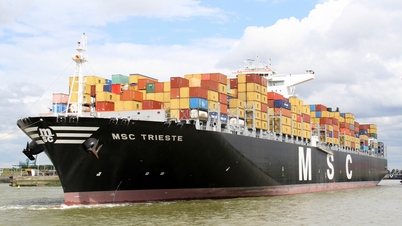















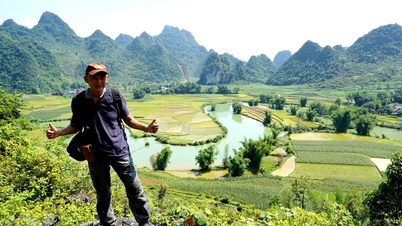

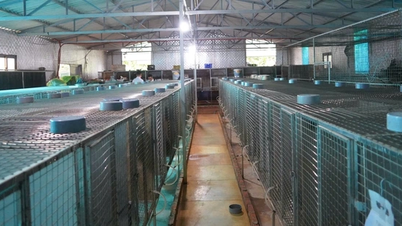









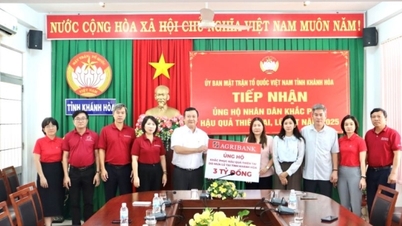











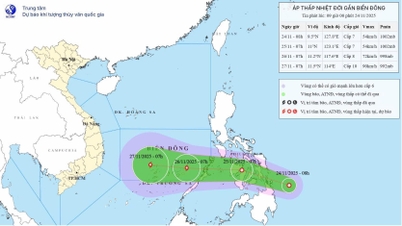



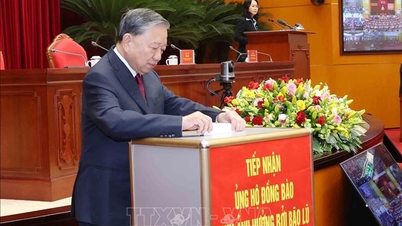











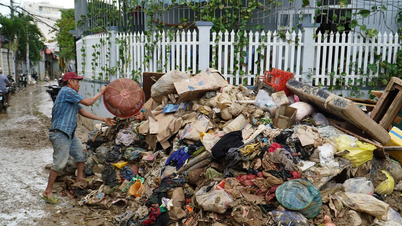




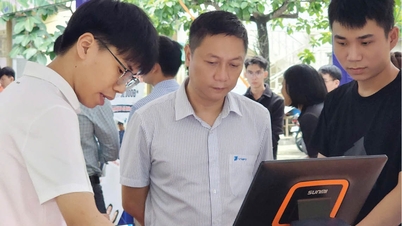

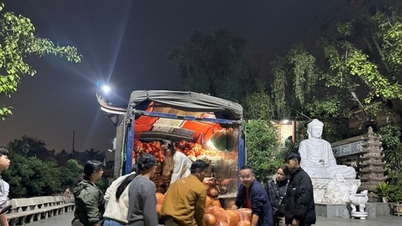
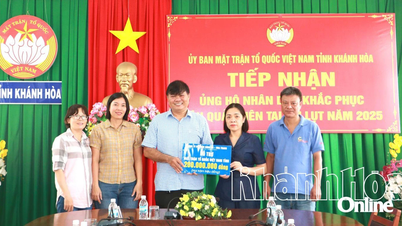














Comment (0)